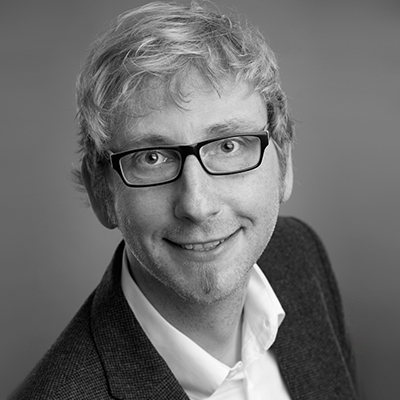Almost €2 million in funding for Münster virologist

Dr. Mario Schelhaas from Münster University has seen off the competition to receive a grant from the European Research Council (ERC). The grant, worth up to two million euros, is particularly prestigious.
Mario Schelhaas is a virologist and biochemist at the Institute of Molecular Virology and the Institute of Medical Biochemistry. He is also a group leader at the Cells-in-Motion Cluster of Excellence at Münster University. In awarding the grant, the ERC will be providing 1.9 million euros of funding for his research for the next five years. “This support means I can take my research to the next level,” says Schelhaas. He and his team work out the infection processes of viruses. He is not only looking at how carcinogenic viruses penetrate into cells and cause, for example, cervical cancer. He also traces the infection process in order to understand cellular processes needed by the virus but which are also indispensable for healthy people. In doing so, he uses the viruses as, in a sense, microscopic spies. So far, Schelhaas has carried out research into such principal mechanisms on cell cultures. With the ERC grant he will be increasing the complexity of his experiments. This allows him to analyse, for the first time, whether – and, if so, to what extent – factors such as the ageing process or previous illnesses influence the known mechanisms and, as a result, the infection process.
Prof. Dr. Wilhelm Schmitz, Dean of the Medical Faculty is delighted about the funding: “Other grants such as start-up helps and those aimed at established researchers have already been awarded to Münster. The fact that a Consolidator Grant, positioned between the two, has been awarded for the first time to a scientist at the Medical Faculty, is a confirmation of our work involving junior scientists,” he says. Last year, with mathematician Prof. Dr. Martin Burger and planetologist Prof. Dr. Thorsten Kleine two scientists from Münster University already received a Consolidator Grant. Altogether, there are around a dozen scientists with a Grant by the European Commission at the Münster University.
The Consolidator Grant funding line is aimed at junior scientists, seven to twelve years after they have gained their doctorate. It provides support for building up or consolidating excellent, independent research teams. With its funding, the ERC aims to support and promote the creativity of young, promising scientists and thus bring new ideas into research.
“We don’t want to research viral infections separately from their environment,“ says Mario Schelhaas. “Cells never stand alone in our bodies – they have established a special relationship with cells and structures surrounding them. This relationship is influenced not only by the cells involved, but also by the age of the organism and the previous illnesses it has had.” Up to now he has observed the movement of viruses and their interaction with macro-molecules and proteins in cells and in the test tube at the smallest level – down to the nanometer range. “In this way, we have discovered several mechanisms fundamental to an infection process and the cell,” explains the virologist. What has not been clear so far, however, is the question of how relevant these mechanisms are to a virus infection that occurs in the body, not induced in a petri dish. This precisely is Schelhaas’ starting point. At first he and his team will continue their experiments in a three-dimensional skin model in which a virus has to penetrate artificially produced skin with several cell layers in order to reach the target cell at all.
The research becomes even more complex when the scientists then check to see how their knowledge holds up in entire organisms. “This is the only way we can recognise what role these processes actually play when a virus infects a body,” says Schelhaas. “After all, a body is much more complex than a single cell.” Finally, he’ll be analysing the importance of ageing processes and previous illnesses. “We all grow older,” he says, “and we already know that in old age we are exposed to a higher risk of infection – but we don’t know really why this is, and so we can’t protect ourselves against it very well.”
In his research work, cooperation with other disciplines is decisive. So Mario Schelhaas works closely together with colleagues at Münster University as part of Collaborative Research Centre 629 (“Molecular Cell Dynamics: intracellular and cellular Movement”) and former Graduate School 1409 (“Molecular Interactions of Pathogens with Biotic and Abiotic Surfaces”). For his ERC grant he also wants to work together with the European Institute for Molecular Imaging (EIMI) at Münster University. A corresponding interdisciplinary pilot project is already being funded by the CiM Cluster of Excellence.
Mario Schelhaas was born in 1973, studied chemistry at Cologne University and gained a grounding in biology at Edinburgh University in Scotland. His degree paper, written at the Max Planck Institute for Plant-Breeding Research in Cologne, dealt with hormone transport in plants. In his PhD thesis at the then Max Planck Institute for Neurological Research (today: Max Planck Institute for Metabolism Research), likewise in Cologne, Schelhaas studied herpes viruses. After this he undertook his first research on carcinogenic viruses at Swiss Federal Institute of Technology (ETH) in Zurich, Switzerland. In 2009, with funding provided by the German Research Foundation’s Emmy-Noether Programme for excellent junior researchers, he set up his first research group at Münster University. In late 2015 Mario Schelhaas and Prof. Thilo Stehle from Tübingen University were chosen by the German Research Foundation to set up a new research unit.

